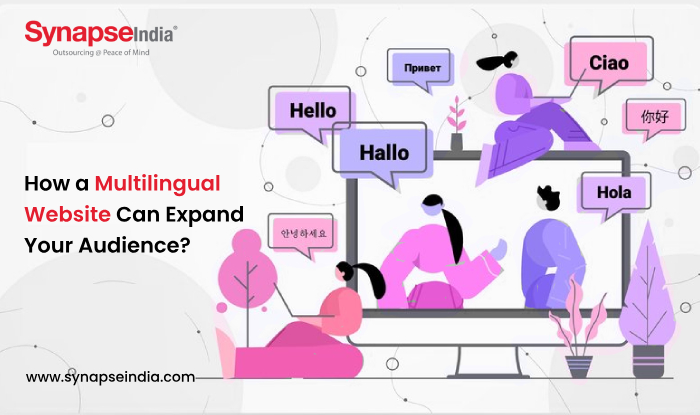 31 May 2024
31 May 2024
A website that is designed multilingual works as an ideal way to attract more customers and helps increase sales. Even if a small size of the population speaks English, you can still reach them through your website in your native language. In this way, a great market expansion will build a much stronger brand recognition against potential customers who might not be able to afford to buy from based in English-speaking countries. Creating a multilingual site helps reduce the bounce rate and make people stay on your site for longer. Let’s explore in this blog how these multilingual website development can boost your reach and help expand your business.

Multilingual websites are essential since they enable businesses to access a wider range of customers and have a worldwide presence. Because the content on these websites is meant to be viewed in several languages, individuals who speak other languages can still access and comprehend it. We will discuss the idea of multilingual websites in this introduction, their significance in the digital era, and how they may help companies that want to interact with a worldwide clientele.
In today's globalized company environment, multilingual websites are essential for promoting participation, streamlining communication, and propelling corporate progress. Through the use of multilingualism and the allocation of resources towards multilingual website creation, enterprises can seize novel prospects, broaden their customer base, and prosper in an ever-more interconnected digital environment.
Multi-language functionality on websites works by allowing users to view content in their preferred language. This involves several key components:
The system may be able to identify a user's chosen language when they visit a website based on their IP address, browser settings, or other factors. As an alternative, users can choose their chosen language directly using a language switcher or dropdown menu.
Usually, users are given a dropdown menu or language selection tool where they can select their favorite language from a list of possibilities. The language in which the content of the website is displayed is determined by this selection.
The website dynamically translates the material into the selected language once the user makes that selection. Machine translation software, human translators, or a combination of the two may be used in this translation process.
It is flexible for users to navigate the website in multiple languages. They can accomplish this by going to the language selector tool and choosing an alternative language. After that, the website makes the appropriate content modifications, enabling seamless multilingual browsing.
Multi-language websites may localize other components, such as date formats, currency symbols, and cultural allusions, in addition to translating text, to better suit the tastes and expectations of users in various geographic areas.
By offering information in several languages, multi-language capability helps websites to cater to a wide range of audiences and improves accessibility, user experience, and engagement in international markets.

Many advantages are available to companies who want to reach a wider audience and serve different languages on their website by having a multilingual version. Here are a few main benefits:
A website that supports many languages enables businesses to connect with more people outside of their local market. Businesses may efficiently reach global consumers and enter new markets by providing information in many languages.
It improves the user's surfing experience and increases their comfort and engagement when content is presented in their mother tongue. When a website is translated into their native tongue, users are more likely to stay on it longer, which increases engagement and conversion rates.
Search engine optimization (SEO) performance can be enhanced by multilingual websites by focusing on multiple language versions of keywords and phrases. By doing this, businesses can improve their search engine ranking and increase organic traffic and visibility in overseas markets.
Respecting and appreciating a variety of audiences is demonstrated by translating and culturally adapting material. By doing so, companies may strengthen their relationships with clients around the world by customizing their messaging and content to fit certain cultural tastes, beliefs, and customs.
A multilingual website can offer businesses a competitive advantage over rivals who only provide material in one language in the increasingly international economy of today. By projecting an image of inclusivity, accessibility, and customer-centricity, the organization can draw in a larger clientele.
Businesses hoping to boost growth, enhance user experience, and establish a global presence can gain a lot from investing in a multilingual website. Businesses may raise brand awareness, draw in more clients, and eventually enhance sales and profitability by providing services to a variety of audiences and languages.

